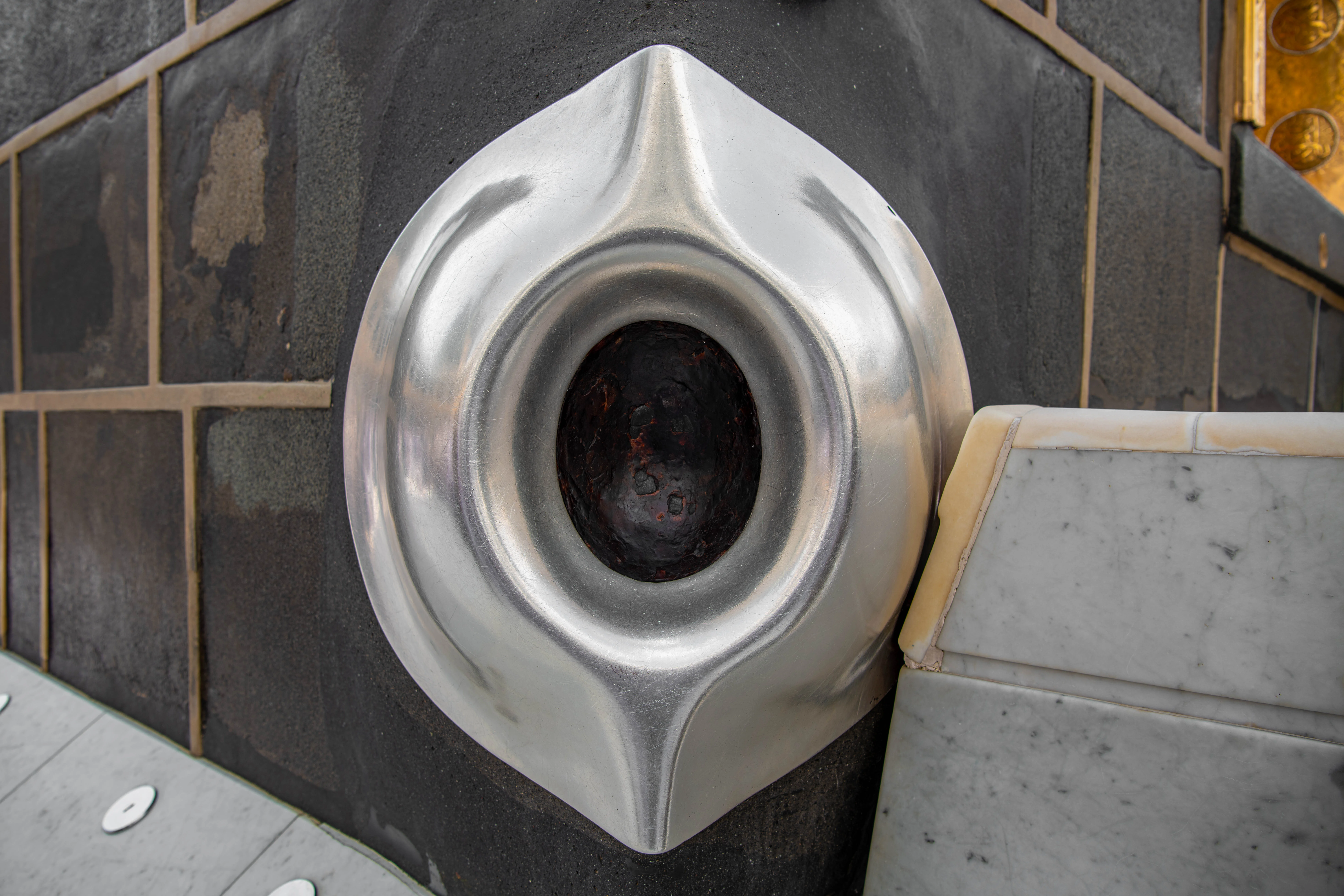
The Black Stone is one of the corners of the Ka‘bah and marks the starting and ending point of each round of Tawaf. It holds a great status in the hearts of Muslims. It is narrated that Jibril (may Allah’s salam be upon him) brought it to Ibrahim (may Allah’s salam be upon him) when he was constructing the Ka‘bah. It was radiant white, shining with light to the east and west, and it was placed as the marker to begin Tawaf.
The Ka‘bah, along with the Black Stone, has undergone renovations throughout history. One of the most notable incidents occurred during the era of the Quraysh, when they disputed over who would have the honour of placing the stone in its position. They agreed that the first man to enter through the gate would be the one to decide, and the Messenger of Allah (may Allah’s salah and salam be upon him) entered. They said, “This is the Trustworthy One”—as he was known as al-Amin even before Islam—and said, “O Muhammad, we are content with your decision.” He called for a cloth, placed the stone in the middle, and asked a representative from each tribe to hold a corner of the cloth. Together they raised it, and then the Prophet (may Allah’s salah and salam be upon him) placed it in its position, thereby resolving the dispute.
Legitimacy of Touching the Black Stone
Scholars such as Shaykh Ibn ʿUthaymin have clarified that touching the Black Stone is to be done either by kissing it or by pointing at it with the right hand only. It is not to be treated as an object of blessing, as some of the general public may believe. The purpose is devotion, not seeking blessings. This is evident in the statement of ʿUmar (may Allah be pleased with him): “Were it not that I saw the Prophet (may Allah’s salah and salam be upon him) kiss you, I would not have kissed you.”
The Kingdom of Saudi Arabia’s Care for the Black Stone
Since the light of Tawhid dawned on this blessed land, the Ka‘bah has remained the centre of intention and has received exceptional care. Within the broader context of the Kingdom’s comprehensive efforts in serving the Two Holy Mosques and their visitors, Saudi Arabia has become a faithful custodian of the House of Allah and a distinguished guardian of the sanctity of this sacred site. In every era of the Kingdom, the Ka‘bah has been a top priority—venerated as Tawhid is venerated, and maintained as Islamic rituals are maintained.
Among the notable efforts to care for the Black Stone are:
-
Lighting the Legal Starting Point of Tawaf: A special light has been installed directly across from the Black Stone to mark the legal beginning point for Tawaf. This helps guide worshippers, including those who may not clearly see the stone due to crowding or performing Tawaf on upper floors, to begin at the correct location, ensuring the validity of their Tawaf.
• Cleaning and Maintenance: The Black Stone is cleaned using advanced technologies and materials that meet international standards. Its metal frame is replaced when necessary. The silver frame surrounding the stone has been renewed twice—in the era of King Khalid (1979) and King Fahd (2001).
• Digital Documentation: In 1442 AH (2021 CE), the Black Stone was photographed using Focus Stack Panorama technology. A total of 1,050 high-resolution images were captured, forming a 3D model of the stone. This technical process took over a week and is considered the first of its kind globally.
• Virtual Viewing: The Smart Ka‘bah Cover project was launched under the "Smart Authority 2024" initiatives. It included digitising the Ka‘bah and the Black Stone, allowing Muslims around the world to view them closely in virtual reality.
• Organising Access for Kissing the Stone: The General Authority for the Care and Management of the Grand Mosque and the Prophet’s Mosque has implemented an advanced plan to manage access to the Black Stone. A security staff member stands beside the stone using a strong rope to help organise and guide pilgrims in the correct manner of kissing it, facilitating a smoother experience for pilgrims and visitors.